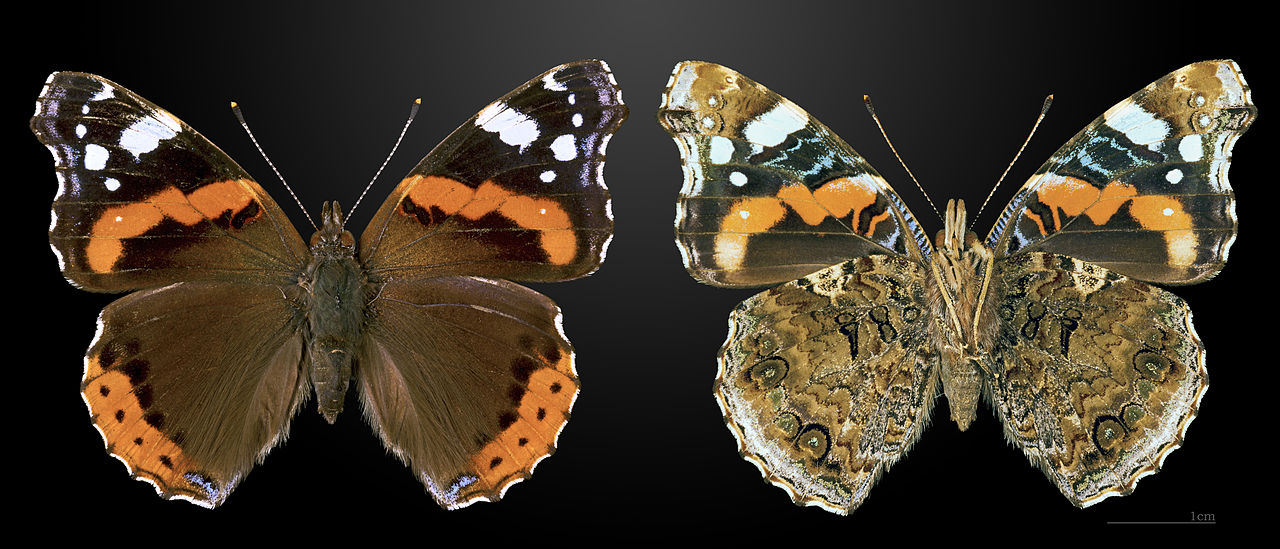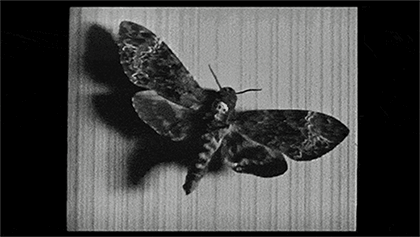Free Association: A Pocket Guide to Notable Lepidoptera
By Eden Hasselblatt

Vanessa atalanta, mounted specimen, dorsal and ventral (left to right) views, Grisolles, Tarn-et-Garonne, France, 2015. Photo by Didier Descouens. Collection of Mus
Lymantria dispar dispar
Circa 1868–69, French artist and amateur entomologist Étienne Léopold Trouvelot imported European gypsy moths to North America in the hopes of breeding a hybrid silk-spinning species. Some of the moths escaped into the forests near his Massachusetts home and their ravenous caterpillars have been decimating foliage ever since. Trouvelot apparently abandoned his ill-advised hobby and turned to astronomy, becoming a noted illustrator of celestial phenomena.

Vanessa atalanta
The butterfly of doom. Legions of black-and-scarlet lepidoptera blazed across Russian skies in 1881, the year Tsar Alexander II was assassinated. Vladimir Nabokov recounted this lore of the ominous red admiral—one of several species to appear in the butterfly enthusiast’s writings.


Un chien andalou, dir. Luis Bu

Acherontia atropos, Acherontia lachesis, Acherontia styx
These three species are commonly referred to as the death’s head hawkmoth, named for the skull-like pattern on their thorax. The moth appears in the Surrealist silent film Un Chien Andalou (1929), written by Luis Buñuel and Salvador Dalí, as well as the iconic poster for the 1991 psychological thriller The Silence of the Lambs.
Hamearis lucina
“No one knows how His Grace the Duke of Burgundy received that name in the first place, any reasoning being lost in the mists of etymological antiquity.”—Matthew Oates, In Pursuit of Butterflies.

Peter Strickland’s film

Danaus plexippus
Monarch butterfly caterpillars feed on poisonous milkweed, emerging in their adult form with brilliant, toxic, amber wings that cause predatory birds to regurgitate them.
Millions of the subspecies D. p. plexippus take fiery flight across the North American continent as the days cool and leaves start to yellow. These golden-orange butterflies are the only kind to embark on a two-way migration, flying south to spend winter in California and Mexico before journeying north in spring. Artist Robert Zhao Renhui photographed them in California, noting that in 2019, there was an 86 percent drop in the number of migrating butterflies.
“Free Association” is a glimpse into the chaotic mind of an ArtAsiaPacific editor, featuring a healthy sprinkling of fun facts and pop culture arcana.
To read more of ArtAsiaPacific’s articles, visit our Digital Library.







